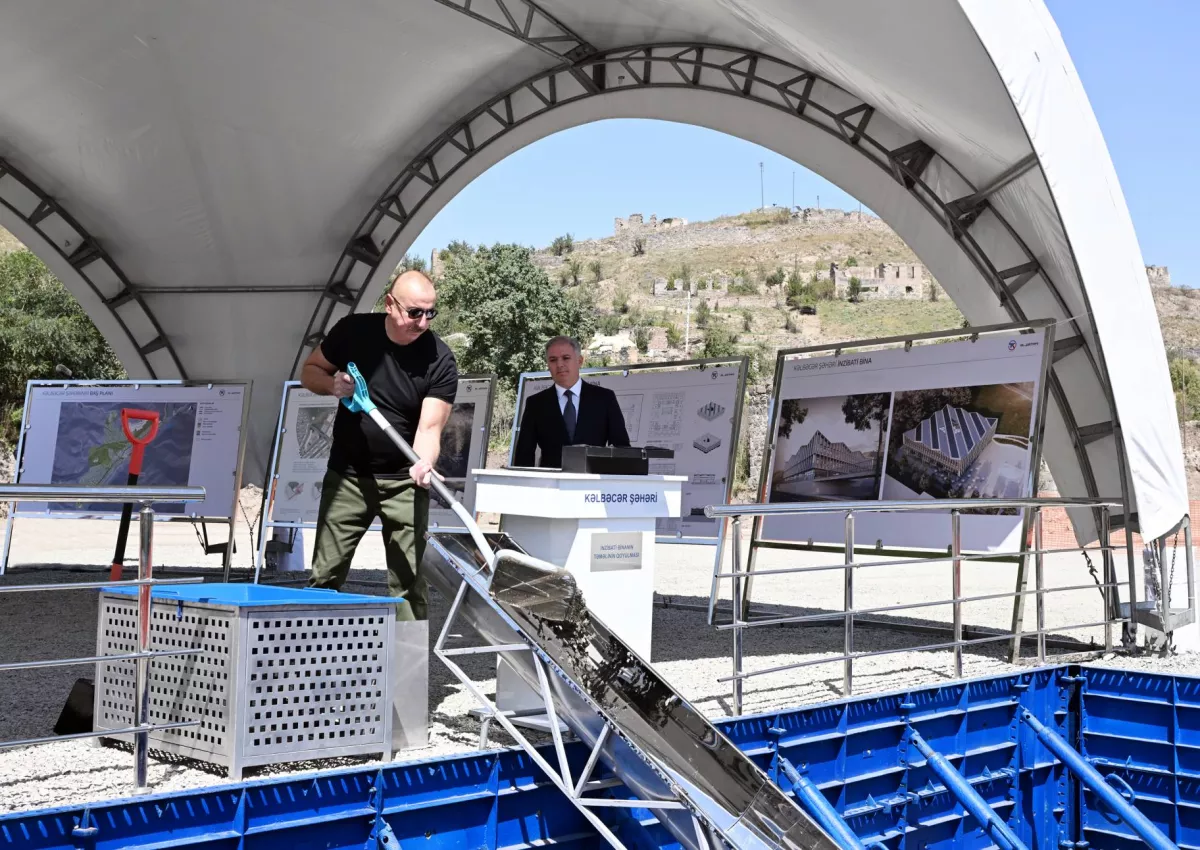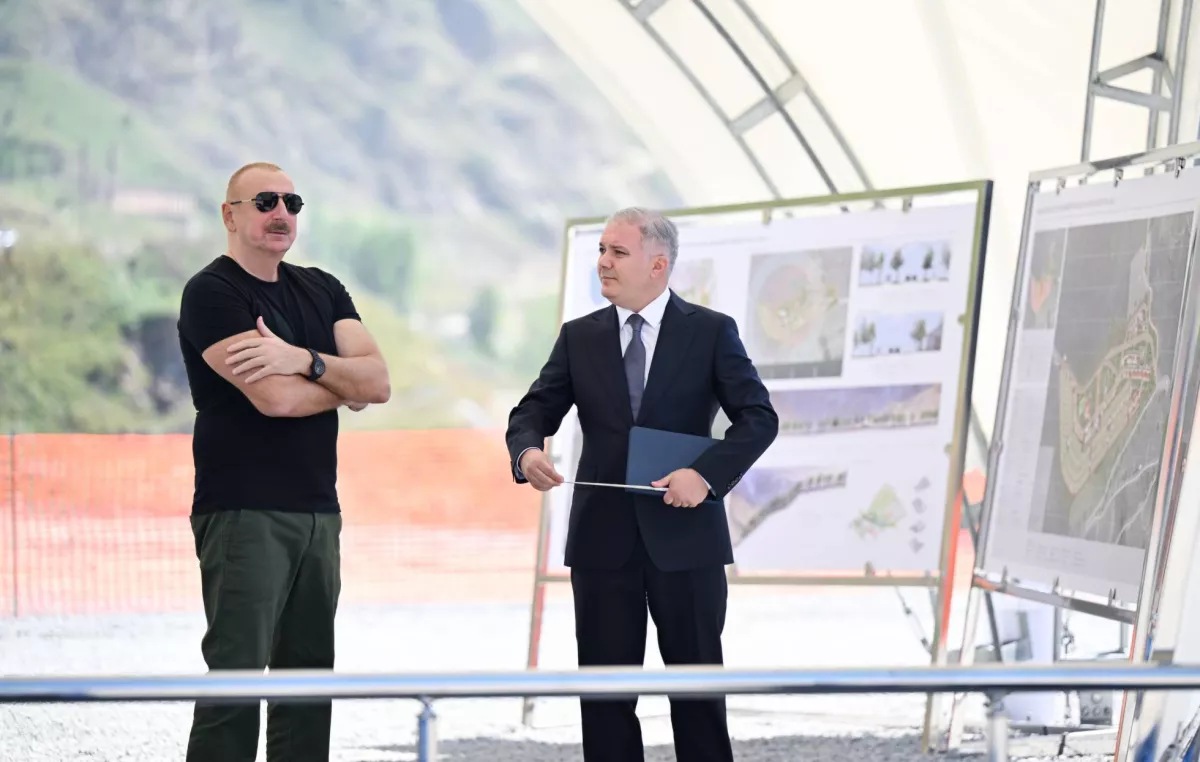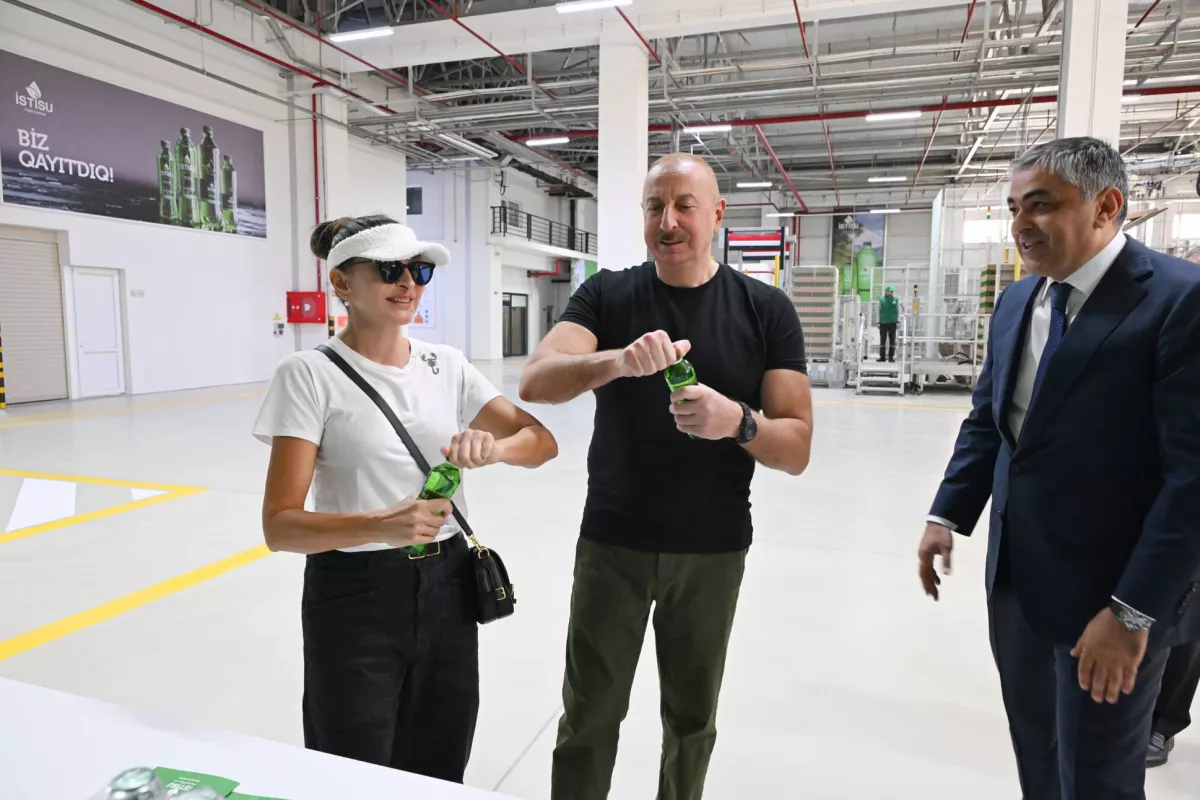Kalbajar's new dawn: Energizing, recreating, and revitalizing Bold step into the Great Return
A central focus of the government's investment strategy from 2021 to 2024 has been the rehabilitation of infrastructure and the construction of settlements as part of the I State Programme of the "Great Return to the Liberated Territories of Azerbaijan". Recently, these initiatives have gained momentum in the Kalbajar district, with plans forecasting the return of over 13,000 former internally displaced persons (IDPs) to this mountainous area by 2026.
On September 2, in a ceremony attended by President Ilham Aliyev, several new settlements, residential complexes, and other significant facilities were inaugurated in the district. Furthermore, a substation, small hydroelectric plants, and a mineral water production facility were brought into operation.
Now in its fourth year, Azerbaijan’s extensive programme of restoring transport, energy, and communal infrastructure, alongside the creation of industrial clusters, continues under the broader objective of reviving territories liberated from occupation. Beyond the primary infrastructure efforts, the overarching aim of the I State Programme "Great Return to the Liberated Territories of Azerbaijan", as sanctioned by the Head of State, is to expedite the establishment of communal and social infrastructure, the construction of housing, and the generation of new employment opportunities, thereby enabling the swift repatriation of citizens to the Karabakh and East Zangezur economic regions.
By 2027, it is anticipated that tens of thousands of flats and individual houses will be constructed in the liberated territories, with over 35,000 families of former IDPs expected to resettle in the first phase. Preparations for the return of these individuals are progressing vigorously in the Shusha, Zangilan, Fuzuli, Aghdam, and Lachin districts, where large-scale housing developments are currently underway.

In the past two years, similar initiatives have gained momentum across other regions liberated from occupation, including the Kalbajar district, which was recently visited by Azerbaijani President Ilham Aliyev. Notably, a foundation-laying ceremony for the Istisu settlement in the western part of Kalbajar district was held with the participation of the head of state. The development plan includes the construction of 159 private houses, 71 duplex houses (comprising 142 flats), and 10 residential buildings with a total of 180 flats. Additionally, the 63.1-hectare site will feature a school, kindergarten, administrative offices, social, medical, and sports facilities, all of which are set to be operational in due course.

On the same day, the President reviewed the construction of a residential complex for 524 families spread over 19.5 hectares in Kalbajar's administrative centre and laid the foundation for a second residential complex designed to house 160 families. He also participated in the foundation-laying ceremony for an administrative building situated between Kalbajar's public centre and the city park and observed the progress on the city's educational complex, including a modular school set to be operational this year.
Successful demining efforts in this mountainous region have significantly advanced the laying of infrastructure, the construction of residential and social facilities, and other critical developments. Notably, last year, seven settlements within Kalbajar district — Istisu, Gamishli, Chaykend, Nadirkhanli, Gilinjli, Otaghli, and Chirag — were designed, with project plans for four additional villages — Chapli, Keshdak, Dalgilinjli, and Imanbinasi — finalised this year. In total, by 2026, the district aims to rehabilitate 15 settlements, including the district's administrative centre, one settlement, and 13 villages.
The State Programme for Great Return places significant emphasis on the development of agro-industrial, trade, service, and other complexes, alongside the construction of communal and energy facilities, all of which will generate employment opportunities for returning citizens. It is worth highlighting that recent research has underscored the substantial economic potential of Kalbajar, part of the East-Zangezur economic region, owing to its rich natural resources.
Kalbajar and the adjacent Lachin districts, both mountainous areas, are the sources of 10 major rivers in the Karabakh region, including the abundant Khakari, Tartarchay, Bazarchay, and Khachinchay rivers, which constitute the primary watercourses in the Lesser Caucasus. The region's high-altitude pastures, forests, and fertile lands offer exceptional prospects for cattle breeding, beekeeping, various forms of crop cultivation, the growth of valuable medicinal herbs, and the establishment of nut orchards. These resources also provide a solid foundation for the future development of the processing and food industries.
This mountainous area is also rich in mineral resources, including deposits of gold, silver, copper, mercury, chromite, and various raw materials essential for construction material production. Notably, the state-owned AzerGold CJSC is actively pursuing a geological exploration programme for precious metal deposits in Kalbajar, set to continue until 2025. Recently, the company's experts completed the first phase of relevant exploration activities in the Tutkhun River basin.
Kalbajar district is distinguished by its abundance of healing mineral springs, such as Yukhari Istisu, Ashagi Istisu, and Keshdak, alongside thermal waters like Tutkhun, Qarasu, Mozchay, and Goturlu. These therapeutic waters, coupled with the region's favourable climate, breathtaking mountain landscapes, forests, and rivers, are set to transform Kalbajar into an international resort and tourist destination. It's worth noting that, starting in 1927, this area was home to the second most significant water-healing resort of the former Azerbaijan SSR, which had the capacity to accommodate 50,000 visitors annually. Unfortunately, this unique complex was entirely destroyed by Armenian occupiers.
Today, efforts are underway to restore the balneological potential of Kalbajar. During his recent visit, President Ilham Aliyev reviewed the progress of the Istisu medical and recreational complex, which is under construction. The complex will feature a hotel with 145 rooms, 10 cottages spread across 32,000 square meters, an SPA centre with thermal baths, therapeutic baths, swimming pools, dining facilities, entertainment complexes, and more.
The highly productive mineral water springs, located at an altitude of over 1,600 meters above sea level and naturally emerging at temperatures exceeding 60°C, have also laid the groundwork for the establishment of the Istisu mineral water bottling plant in Kalbajar. It’s worth recalling that the production of Istisu mineral water began in 1976, and this healing water was highly sought after throughout the USSR.

The liberation of the Karabakh region has breathed new life into the local mineral water industry. Two years ago, construction began on a state-of-the-art bottling plant, and recently, President Ilham Aliyev attended its official commissioning ceremony. The plant is designed to produce over 100 million glass bottles annually, employing cutting-edge technology to ensure that the mineral water retains its natural properties. The thermal mineral water bottled here is rich in sodium bicarbonate, sulphate, calcium, magnesium, and other trace elements, making it particularly beneficial for treating gastrointestinal ailments. The water meets both local and international quality and safety standards, certified under AZS 216-2006, ISO 9001:2015, and ISO 22000:2018, thus paving the way for extensive export opportunities.
Meanwhile, significant progress is being made in developing the energy infrastructure of Kalbajar district. Three years ago, Azerenerji JSC commissioned the 110/35/10-kilovolt Kalbajar substation, and in the ensuing years, five small (derivation) hydroelectric power plants with a total capacity of 27 MW were completed. Plans are also in place to construct an additional 10 small hydroelectric plants with a combined capacity of 75.5 MW along the rivers and reservoirs of this mountainous region. These plants are expected to generate approximately 230 million kilowatt-hours of electricity annually.
The development of the energy potential in this mountainous region is advancing rapidly. On September 2, President Ilham Aliyev attended the commissioning ceremony of the new 110/35-kilovolt "Istisu" substation, which boasts a capacity of 40 MVA. This state-of-the-art facility, equipped with modern remote telemetry systems and the SCADA dispatching system, is designed to provide electricity to both the Istisu sanatorium and the newly operational Istisu mineral water plant. The substation is connected to the existing 110/35-kilovolt "Kalbajar" substation via a double-ring 110 kV overhead line. This, in turn, integrates the new substation with the 110/35-kilovolt "Gorchu" and "Lachin" substations, establishing a robust 110-kilovolt ring network that ensures reliable and uninterrupted power supply throughout the Kalbajar district.

On the same day, President Ilham Aliyev inaugurated the small derivation hydroelectric power plant "Zar" on the Kurekchay River, with a capacity of 4.3 MW, as well as the "Yukhary Vang" hydroelectric power plant on the Tartar River in Kalbajar district, which boasts a capacity of 22.5 MW. Additionally, using the SCADA system, the president remotely commissioned the "Toganaly" small hydroelectric power plant, with a 4.1 MW capacity, located in Goygol district. In the coming years, the green energy generated at the "Yukhary Vang" HPP alone is expected to fully meet the electricity needs of the Kalbajar district. Overall, the Kalbajar HPP cascade, with a total capacity of 40 MW, represents the second largest hydroelectric power cascade built in the liberated territories, following the 42 MW "Zangilan" HPP cascade.
The establishment of a robust energy sector in Kalbajar is not only aimed at exporting surplus electricity but also at harnessing the district's vast raw materials and agro-industrial potential. This development is expected to create thousands of jobs, ensuring sustainable livelihoods for many Azerbaijani families returning to their ancestral homes for decades to come.








